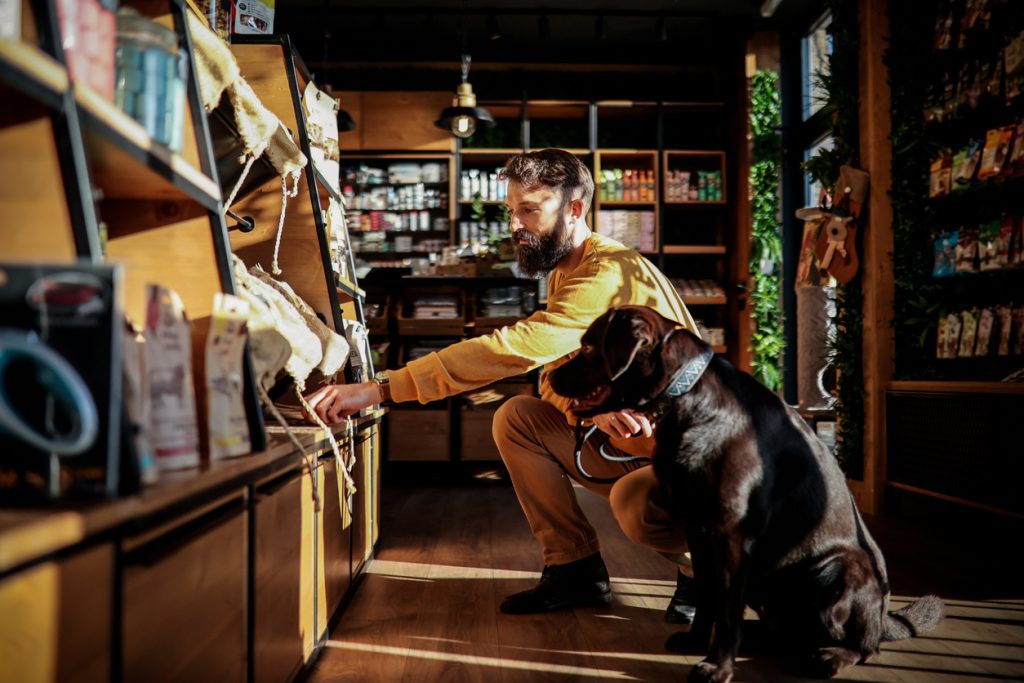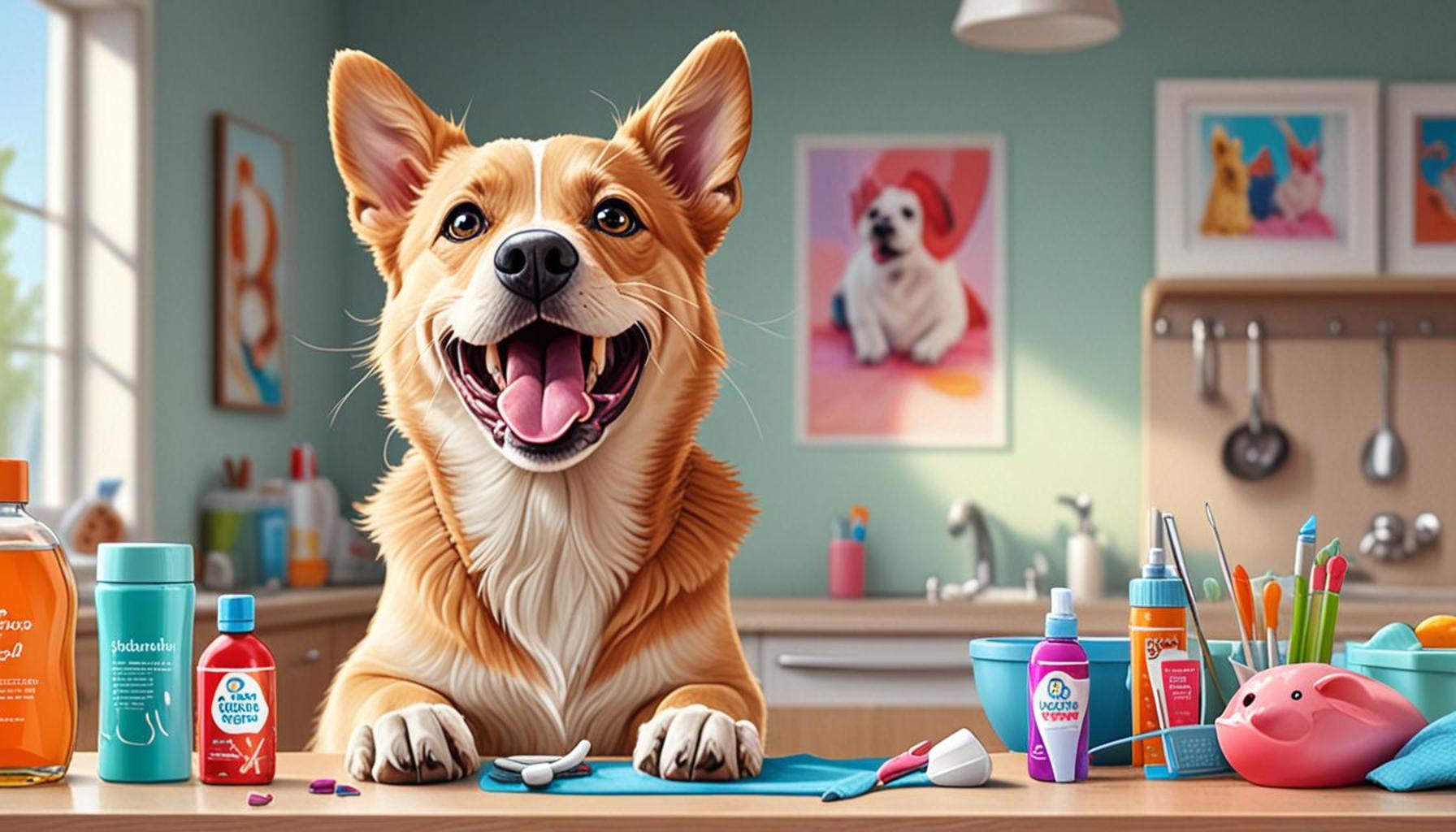The relationship between the environment and pet health: how to create a safe and healthy space

Understanding the Bond Between Environment and Pet Health
The health and happiness of your furry companions are tightly linked to their environment. A well-thought-out space can enhance their well-being, offering protection from dangers and ensuring a thriving life. This article explores how to create a safe and healthy space for pets.
Consider the various aspects of your pet’s environment that can impact their health:
- Toxic Plants: Many common household plants, such as philodendrons, lilies, and pothos, can be harmful to pets. Ingesting these plants may lead to symptoms ranging from mild gastrointestinal upset to severe health complications. Pet owners should carefully research and select pet-friendly plants, such as spider plants or Boston ferns, to ensure their furry friends remain safe.
- Clean Air: Indoor air quality significantly influences pet health. Pets are sensitive to airborne toxins and allergens. Regular cleaning, using air purifiers, and ensuring proper ventilation can reduce dust, mold, and pollutants that compromise your pets’ respiratory health. Additionally, avoiding smoke and strong chemicals can create a fresher and safer atmosphere.
- Safe Spaces: Designating areas for pets that are free from hazards is vital. Think about creating a cozy corner equipped with their bed, toys, and on-demand access to fresh water. This space should be away from high-traffic areas of the home and free from choking hazards or easily breakable objects. A safe space can also help reduce anxiety during stressful events such as thunderstorms or fireworks.
Pets are remarkably sensitive to their surroundings, and even small changes can make a significant difference in their health and behavior. For instance, a proper diet complemented by a stimulating and secure environment could greatly reduce behavioral issues in dogs and cats. It’s essential to recognize that our furry friends thrive in environments that cater to both their physical and emotional needs. This means creating stimulating spaces with interactive toys, climbing structures for cats, or secure areas where dogs can play fetch safely without the risk of injury.
As pet owners, it’s our responsibility to create an environment that not only meets their physical needs but also stimulates their mental health. Regular engagement with your pets through play and exploring new environments can bolster their happiness and well-being.
Throughout this article, we will delve deeper into effective strategies for crafting an optimal living space that safeguards both pets and our planet. From incorporating eco-friendly materials in your home design to creating enriching spaces that stimulate your pet’s curiosity, stay tuned to discover actionable tips and eye-opening insights that can transform your home into a haven for your beloved pets.

LEARN MORE: Click here for essential adoption insights
Creating a Pet-Friendly Environment: Key Factors to Consider
Establishing a safe and healthy environment for your pets involves a multifaceted approach. It’s essential to contemplate several factors that not only safeguard their physical well-being but also enhance their overall quality of life.
- Pet-Proofing Your Home: The first step in ensuring your pet’s safety is thorough home inspection. Look for potential hazards, such as loose electrical cords, small objects that can be swallowed, and harmful household chemicals. Consider investing in furniture with rounded edges and securing heavy items that could fall over, minimizing the risk of injuries. Keeping cleaning supplies in locked cabinets can also prevent accidental ingestion.
- Outdoor Safety: If your pets spend time outdoors, it’s paramount to assess your yard for threats. Avoid the use of pesticides and herbicides, as many common chemicals are toxic to pets. Instead, explore natural alternatives for pest control and maintenance. Additionally, installing fencing can keep your pets secure while allowing them to enjoy fresh air and sunshine. Regular checks for harmful debris, sharp objects, or toxic plants like poison ivy can protect your pet’s well-being.
- Temperature Regulation: Temperature extremes can influence your pet’s health significantly. During hot summers, ensure your pets have access to shade and plenty of fresh water to avoid dehydration or heatstroke. In cold winters, provide warm bedding and shelter to keep them safe from harsh weather. Recognizing and addressing temperature fluctuations helps prevent serious health risks.
Furthermore, consider the significance of noise control in your pet’s environment. Loud sounds from nearby traffic, construction, or even thunderstorms can cause anxiety in pets. Mitigate these disturbances by soundproofing areas where your pets spend most of their time or using calming products designed for anxious pets, such as music or pheromone diffusers.
Regular Veterinary Care is also a crucial component in monitoring your pet’s health. Routine check-ups enable early detection of health issues, while vaccines and preventive treatments, like flea control, contribute to an overall safe environment. Proactive healthcare ensures that your pet is well-equipped to thrive in any environment.
As you embark on your journey to cultivate a healthy space for your pets, remember to engage with them in their environment. Interaction is key to stimulating their minds and reducing stress. Toys that promote mental engagement, such as puzzle feeders or interactive playthings, can keep both their bodies and minds active.
In the following sections, we will delve into more detailed strategies for creating an environment that prioritizes both pet wellness and ecological sustainability. From selecting safe, eco-friendly materials for home improvement to establishing enriching play areas, you will discover comprehensive ways to enhance the safety and health of your beloved pets.
Creating a safe and healthy environment for pets is not just about providing food and shelter; it encompasses a holistic approach involving their physical, emotional, and social needs. The interconnection between the environment and pet health plays a pivotal role in ensuring that our furry companions thrive.One essential aspect is the incorporation of natural elements into the living space. Animals are instinctually drawn to nature, which provides them with sensory stimulation and comfort. For instance, having indoor plants can enhance air quality and create a more serene atmosphere. However, it’s crucial to ensure that the plants chosen are non-toxic to pets. Research suggests that plants like spider plants and Boston ferns not only purify the air but also add a touch of beauty to your environment.Moreover, creating a designated play area filled with safe toys and natural materials can significantly improve your pet’s mental well-being. Active pets tend to experience fewer behavioral issues and enhanced health. Rather than opting for chemically treated toys, consider wooden toys or those made from organic materials, which are safer and often more durable.On the outdoor front, establishing a secure yard can protect pets from harmful substances such as pesticides and fertilizers. Consider natural landscaping techniques like using native plants that require less maintenance and are typically more resilient. This reduces the need for chemical treatments, promoting not only your pet’s health but also benefiting local wildlife.Additionally, regular inspections of both indoor and outdoor areas can help eliminate potential hazards. Cleaning supplies, garden tools, and electrical cords should be stored safely away from your pet’s reach. By maintaining a tidy environment, you significantly reduce the risk of accidents that could jeopardize their health.Another crucial factor in the relationship between the environment and pet health is the establishment of safe walking paths for exercise. Natural walks not only provide physical activity but also offer exposure to various terrains, which can enhance joint health and overall fitness. Ensuring these paths are clean and free of debris or harmful substances is vital for your pet’s safety.As you create this safe haven, you set the stage for a fulfilling relationship not just between you and your pet, but also with nature. Not only do you cultivate a healthy environment, but you also contribute positively to the ecosystem surrounding you, ultimately fostering a community of vitality and wellness for all living beings.
DIVE DEEPER: Click here to discover how technology is reshaping the pet supply industry
Integrating Eco-Friendly Solutions for Optimal Pet Health
As we continue to explore the intricate balance between the environment and pet health, it’s vital to consider the use of eco-friendly materials and practices within your home. Not only can these choices lead to a safer space for your pets, but they also benefit the planet, creating a holistic approach to health and sustainability.
- Choosing Non-Toxic Products: When it comes to cleaning supplies and pet care products, opting for non-toxic and biodegradable alternatives can significantly reduce the risk of chemical exposure for your furry companions. Common household cleaners contain harsh chemicals that can lead to skin irritations or respiratory problems. Instead, look for brands that emphasize natural ingredients. For example, vinegar and baking soda are effective for cleaning and are safe for both pets and the environment.
- Eco-Friendly Pet Supplies: Explore the array of eco-friendly pet supplies available on the market today. From biodegradable dog waste bags to sustainable cat litter options made from recycled paper or corn-based materials, these products minimize environmental impact while prioritizing your pet’s safety. Moreover, consider purchasing toys made from natural rubber or organic cotton to avoid exposure to harmful chemicals commonly found in synthetic materials.
- Creating Green Spaces: Enrich your pet’s environment by incorporating plants that are both safe for pets and beneficial to air quality. Spider plants, Boston ferns, and bamboo palm are excellent choices that can enhance your indoor spaces while serving as natural air purifiers. However, it’s crucial to avoid keeping toxic plants such as lilies or sago palms that can pose serious health threats to pets.
Additionally, utilizing natural pest control methods not only contributes to a safer outdoor environment but also aligns with sustainable living practices. Instead of relying on chemical pesticides, try implementing natural deterrents like diatomaceous earth or introducing beneficial insects that can help regulate pest populations. This approach not only protects your pets but also fosters a more balanced ecosystem around your home.
Climate-Resilient Outdoor Spaces
In creating a healthy space for your pets, consider adapting your outdoor environment to be more climate-resilient. As climate change affects our weather patterns, employing methods such as native landscaping can create a safe haven for your pets. Native plants require less water and handle local climate conditions better, reducing the need for fertilizers and pesticides that pose risks to both pets and wildlife.
Building a shaded pet area utilizing natural materials not only protects your pets from the harsh sun but also contributes to an environmentally friendly aesthetic. Structures made from reclaimed wood or sustainably sourced materials can provide shelter while reducing your carbon footprint.
Furthermore, involving your pets in outdoor activities that educate them about nature, such as hiking or visiting parks designed for pets, can foster a deeper connection between them and their surroundings. Engaging in nature-based activities promotes physical health and can alleviate mental anxiety, showcasing the significant relationship between a healthy environment and pet well-being.
As you delve deeper into creating a safe and healthy space for your pets, embracing environmentally conscious practices is more than a choice; it’s a pathway to enriching their lives while contributing to the planet’s health. Whether you choose non-toxic cleaning supplies, eco-friendly pet products, or nature-engaging activities, each decision you make shapes a more sustainable and healthier environment for your beloved companions.
DON’T MISS OUT: Click here to find out more
Conclusion: Creating a Safe Haven for Pets Through Environmental Awareness
In navigating the intricate relationship between the environment and pet health, it becomes clear that the choices we make can significantly affect our beloved animals’ well-being. From selecting non-toxic cleaning products to incorporating eco-friendly pet supplies, each decision plays a vital role in ensuring a safe and nurturing environment. By adopting sustainable practices, we not only foster cleaner spaces for our pets but actively contribute to the health of our planet.
The emerging trend of green pet care highlights the importance of integrating natural options—whether through biodegradable waste solutions or organic toys. Additionally, enhancing indoor environments with safe plants and creating climate-resilient outdoor spaces can enhance air quality and provide shelter from harsh conditions. These small adjustments can lead to significant improvements in both pet happiness and health.
Furthermore, engaging with our pets in nature—by visiting dog parks or partaking in outdoor activities—creates a bond that benefits their mental and physical well-being. This symbiotic relationship demonstrates that a healthy environment translates to healthier pets, and vice versa. As we strive to create safe spaces for our furry companions, prioritizing environmental awareness is essential.
Ultimately, the journey toward a sustainable and pet-friendly home is ongoing, requiring dedication and mindfulness. By coming together as pet owners and advocates for the environment, we can cultivate spaces that reflect our love for our pets and our planet, paving the way for a brighter future for all.


